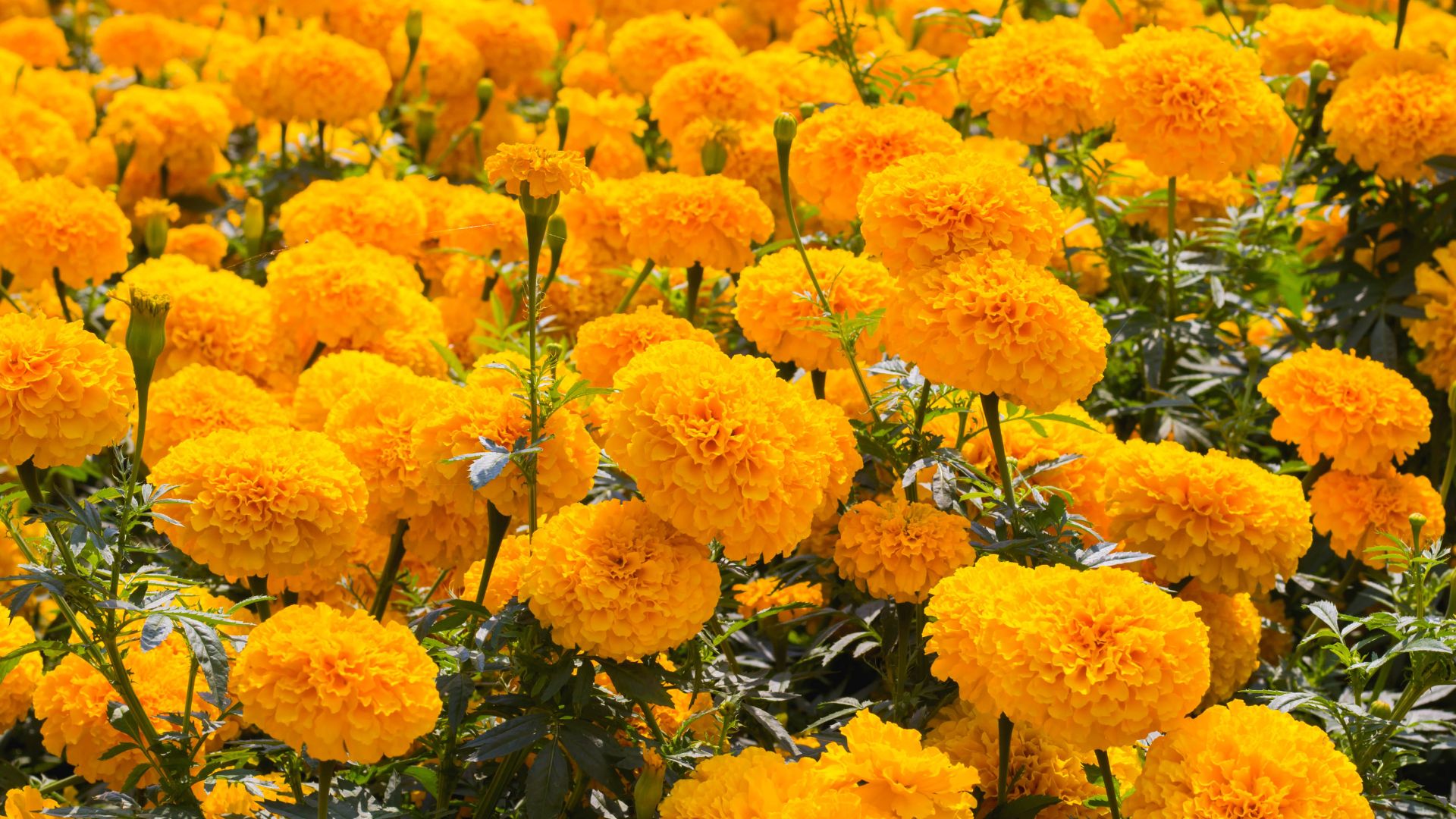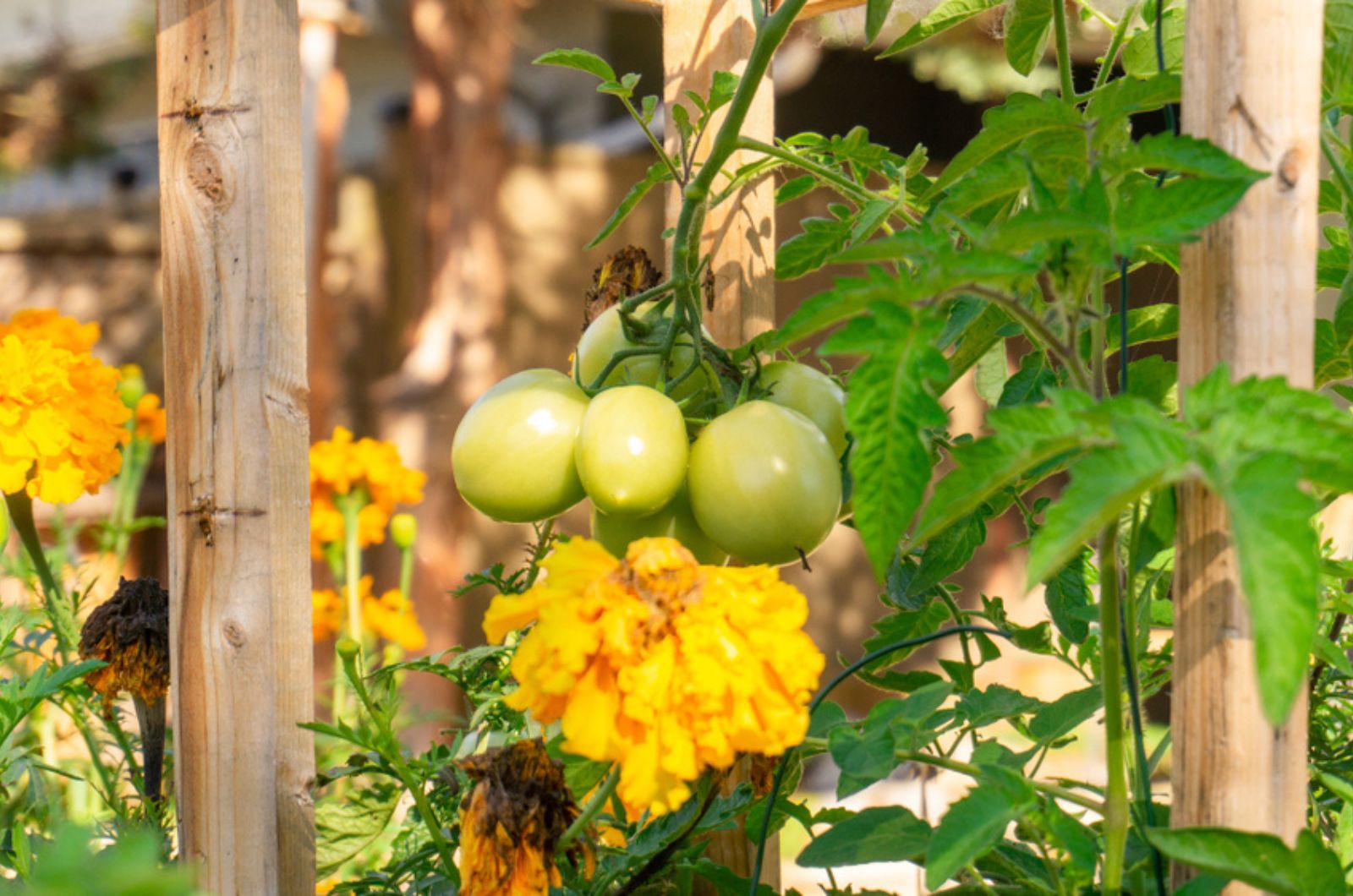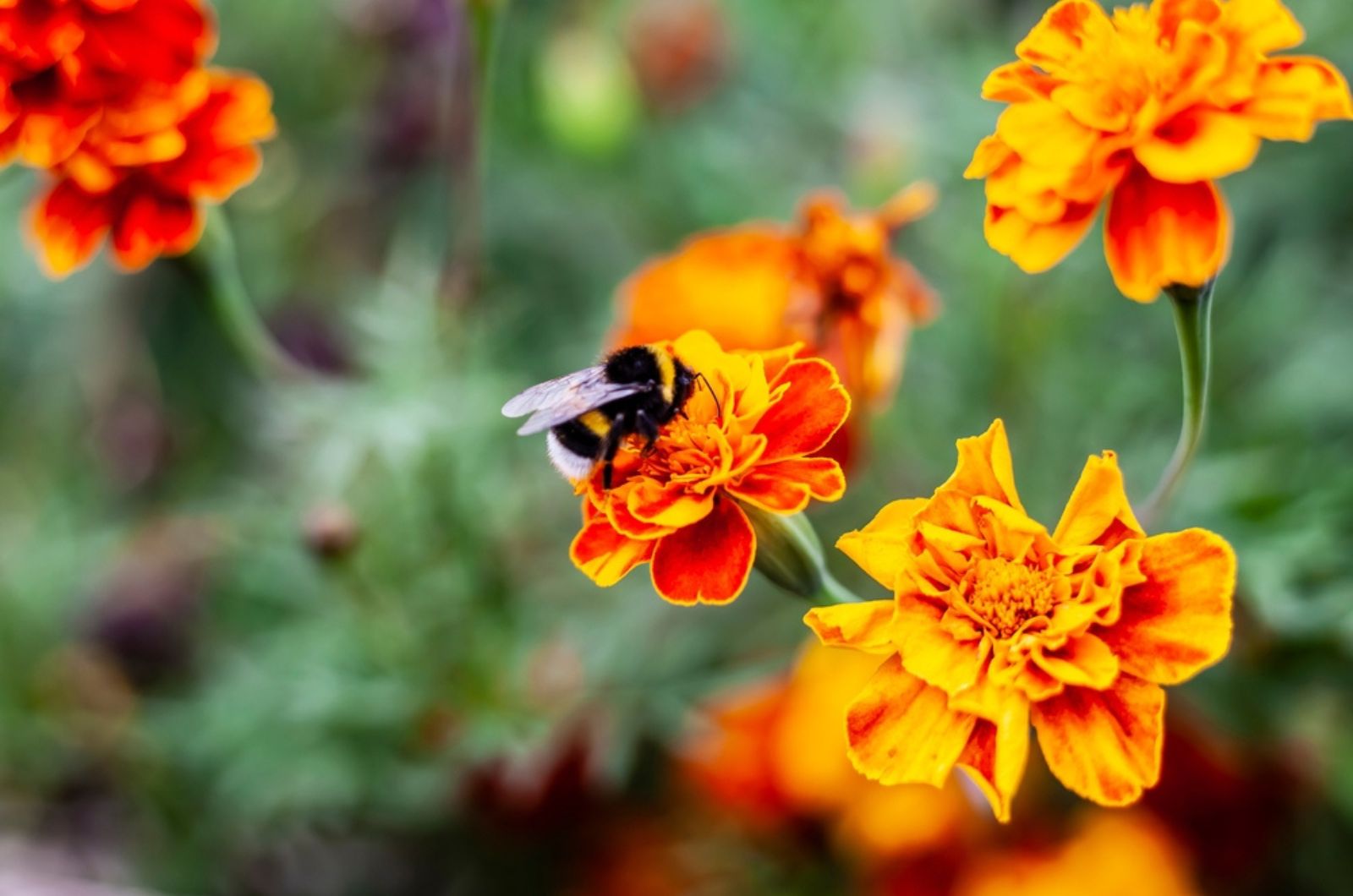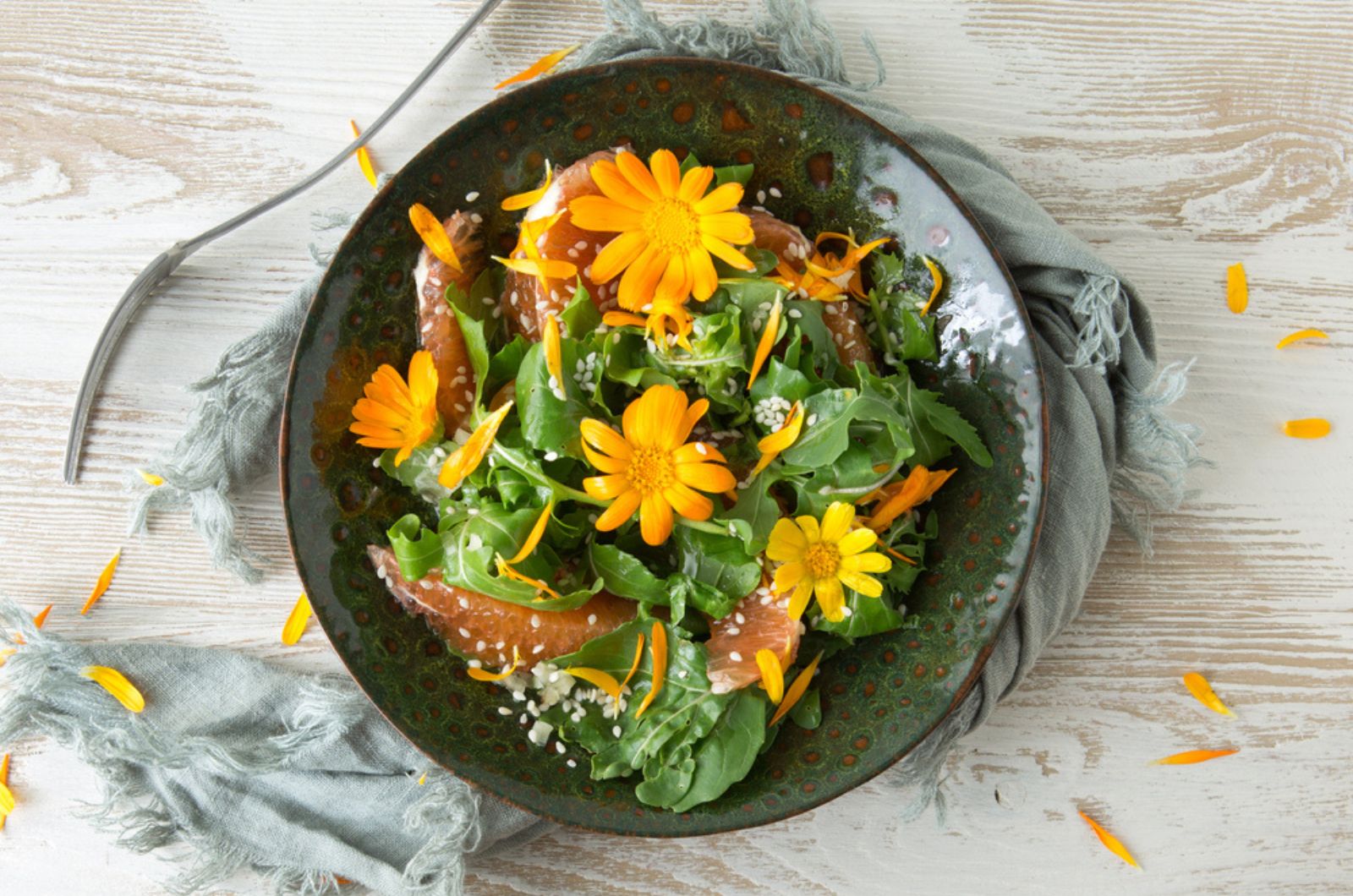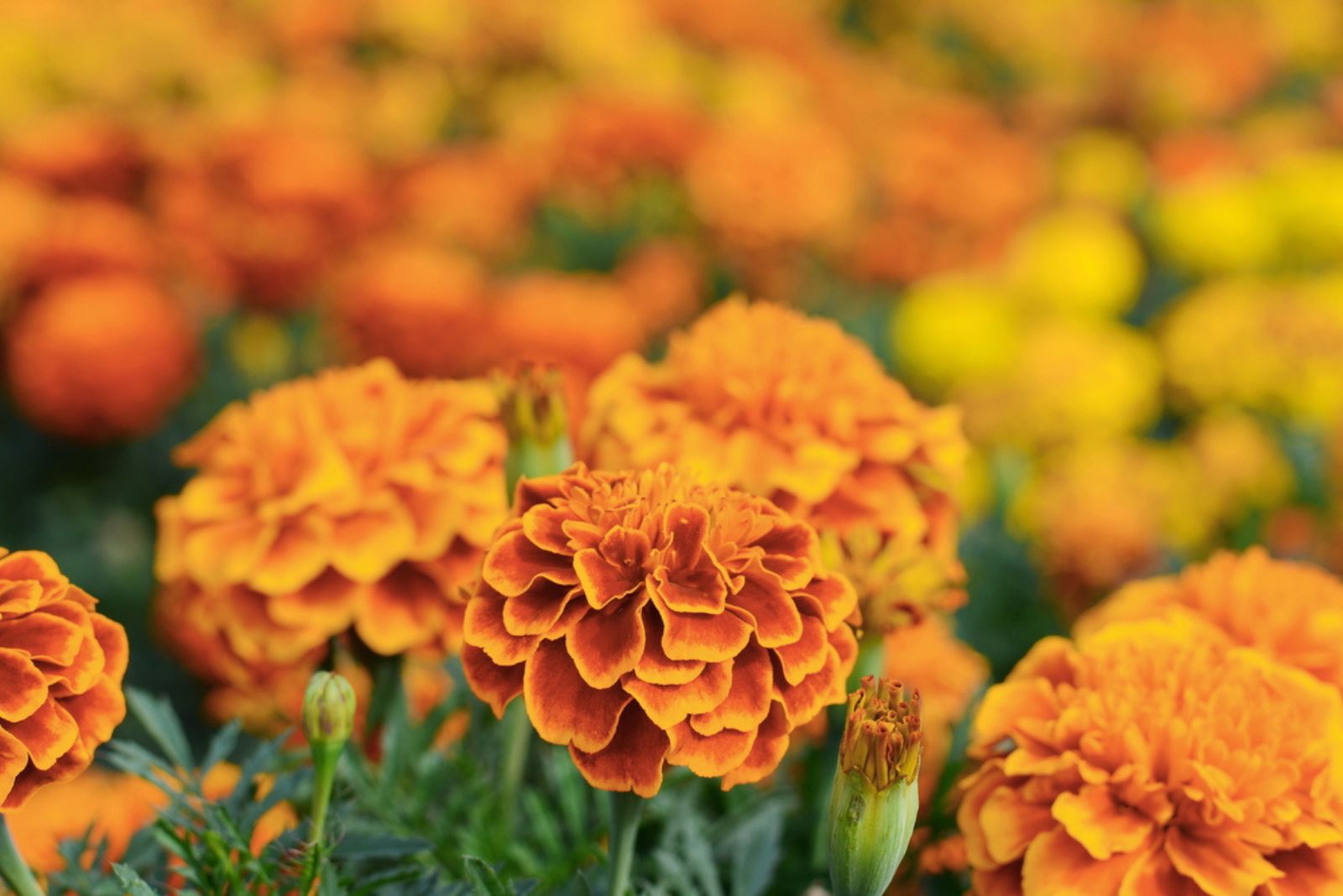Marigolds are popular flowers in the gardening world due to their easy maintenance and colorful blossoms.
But they have other strengths you might not have heard about before. Here are some things about marigolds you most likely didn’t know. Or you did, just not to the full extent.
Let’s get started!
#1 Perfect Companion Plants
In the gardening world, marigolds are known as the perfect companion plant. They thrive alongside numerous flowers and vegetables and provide their benefits.
Mexican marigolds can deter pests, so why not add them to your vegetable plot? They will keep nematodes at bay due to the chemicals they exude, acting as a sacrificial crop for other pests, and generally being bad hosts. (1)
Marigolds can also positively affect the soil microbes, increasing their numbers and activity during crop rotations. (2)
However, these flowers can be allelopathic to certain plants, such as beans, and can inhibit their growth, which is why you should separate them if possible. (3)
#2 Pollinator Magnets
There are many reasons to grow marigolds in the vegetable garden, and one of them is attracting pollinators and other beneficial insects.
They produce long-lasting blossoms from early summer until late fall when they attract a host of pollinators, including bees, butterflies, hummingbirds, and moths.
This can ensure proper pollination and increase your overall yield. Not to mention the pest control benefits you get from this companion plant.
If you want to attract as many pollinators as possible, go for single-petaled varieties and deadhead them throughout their growing season to ensure additional flushes of flowers.
And if you want to save the seeds for the next year, simply leave some spent flowers to go to seed, harvest them, and store them in a dry and cool spot until spring.
#3 Edible Blossoms
Did you know that marigold flowers aren’t just for show? You can eat them, too!
There are numerous edible flower recipes, and marigolds wriggled their way to the top of the list.
They contain lutein – a carotenoid which can protect your eyes from UV light, aging, and oxidative damage. (4)
You can use marigolds to make tea or to add an anise-like taste to your dishes if you’re all out of French tarragon.
Also, this substance is highly pigmented, so you can use it to make natural dyes in warm golden yellow hues.
So if you want to use marigolds in your cooking, make sure to start them from seed and not buy plants from nurseries since you can never know whether they’ve been treated with chemicals there.
And when growing them on your own, it’s best to steer away from synthetic fertilizers and pesticides, and use products suitable for edibles instead. Even with these precautions in mind, always remember to wash the flowers before using them.
#4 New World Natives
Contrary to the popular belief that arose due to names such as African or French marigolds, these plants are actually native to the Americas.
Their native range spreads from South and tropical America to Southwestern North America, numbering around 50 different species.
Now let’s end the confusion!
African marigolds are also native to the Americas, Mexico and Central America, and are also known as Aztec marigolds. They have the word “African” in their name because they were first introduced to Europe through northern African regions, not the Americas.
And French marigolds aren’t really from France. They are native to Mexico and Guatemala, but they got their name from being quite popular in French gardens.
These plants thrive in many climates. Marigolds are short-lived perennials, although there are annual varieties, such as French or African marigolds.
#5 Day Of The Dead Staple
Marigolds have deep roots in the Day of the Dead tradition because they are believed to attract the souls of the dead to the offerings prepared for them.
This day is usually celebrated on November 1st and 2nd, and many families prepare altars decorated with candles, marigolds, personal items and pictures of the deceased, and even their favorite food.
Commonly celebrated in Mexico and Central America, the Day of the Dead grew in popularity as these peoples migrated to the US and Canada, where this holiday is also celebrated.
This tradition has led to a great demand for marigolds, making their production boom.
References:
1. Hooks, C. R. R., Wang, K.-H., Ploeg, A., & McSorley, R. (2010). Using marigold (Tagetes spp.) as a cover crop to protect crops from plant-parasitic nematodes. Applied Soil Ecology.
2. Huang, F. et. al. (2022). Effect of Marigold (Tagetes erecta L.) on Soil Microbial Communities in Continuously Cropped Tobacco Fields. Scientific Reports.
3. Latheef, M. A. & Irwin, R. D. (1980). Effects of Companionate Planting on Snap Bean Insects, Epilachna varivestia and Heliothis zed. Environmental Etymology.
4. Lutein (n.d.). UR Medical Center: Health Encyclopedia.

